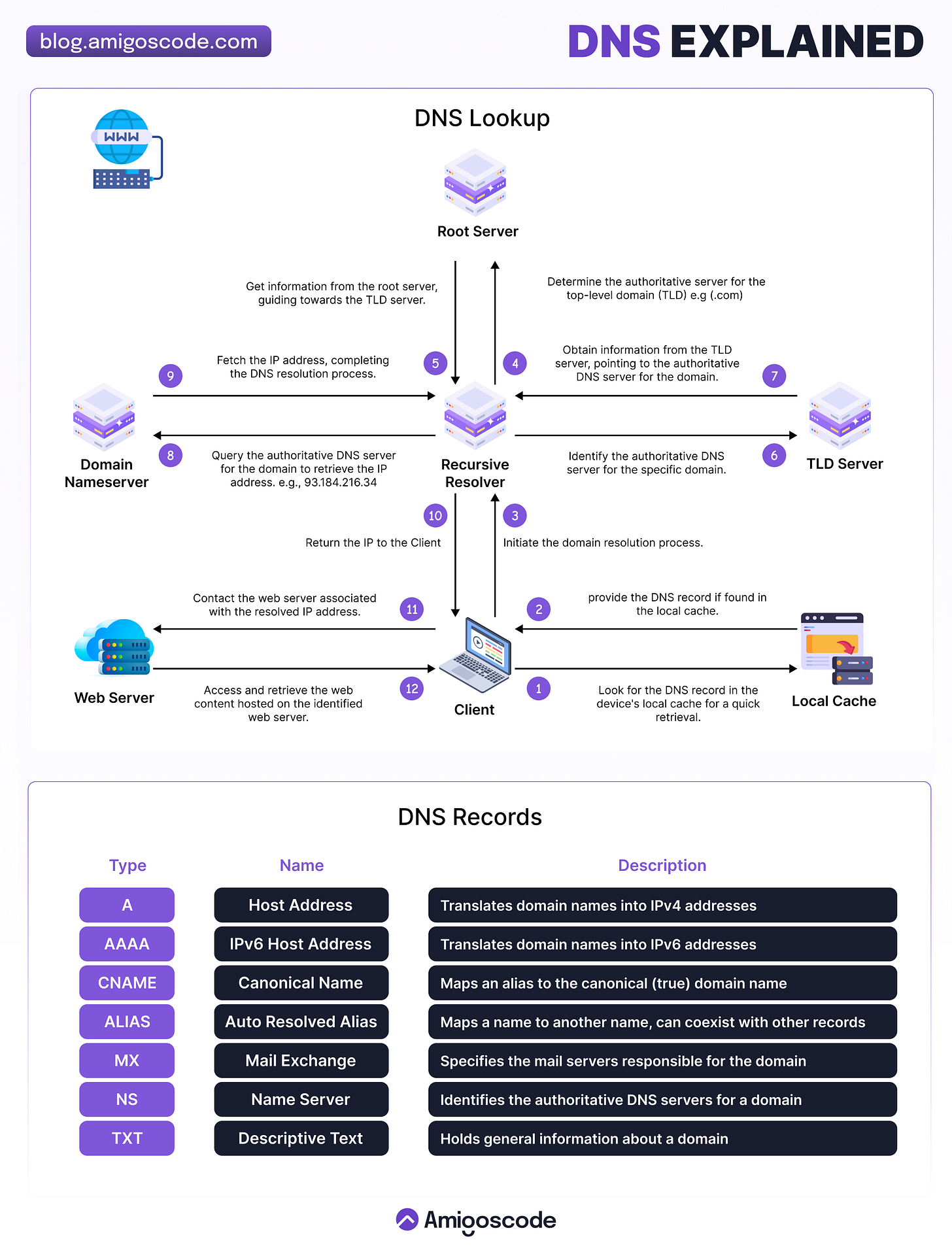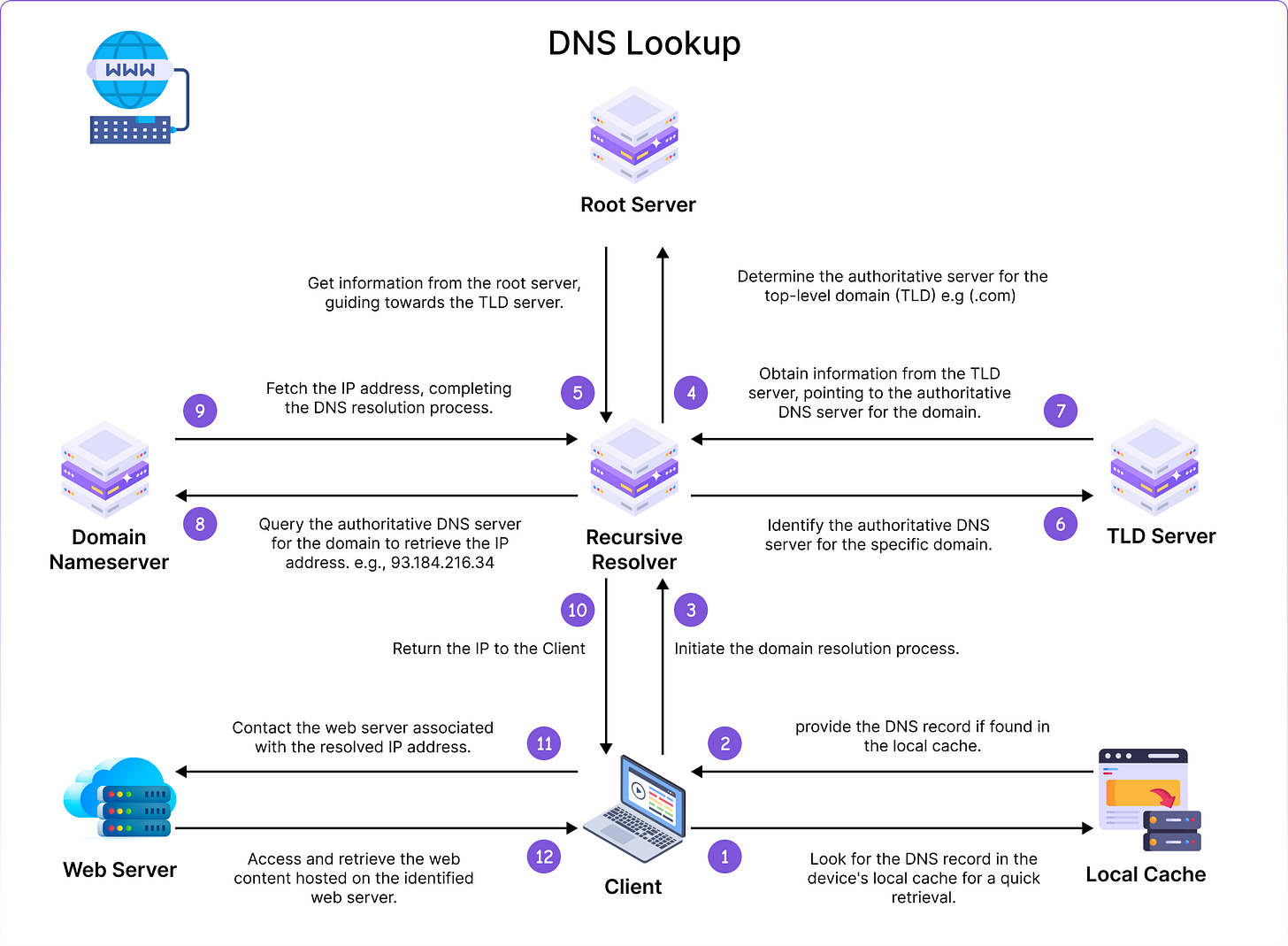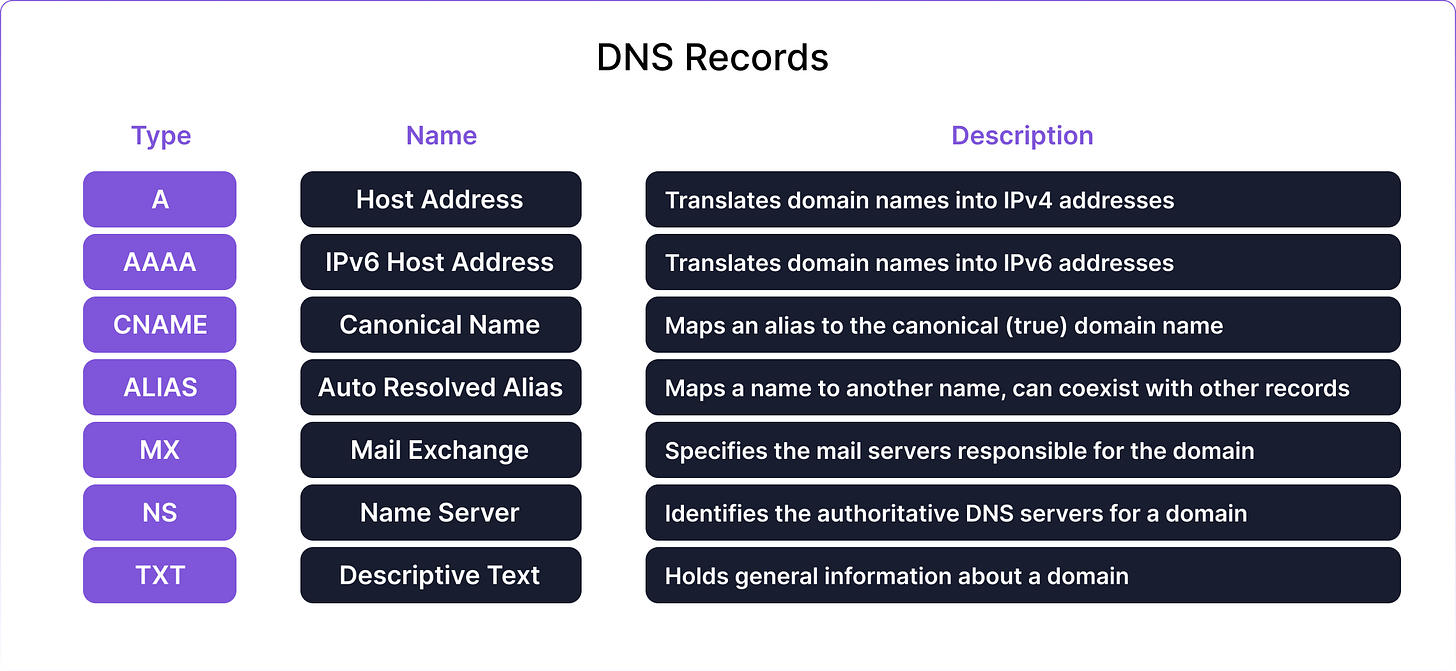What Happens When You Type a URL? DNS Explained for Developers
Learn how DNS works, step-by-step, from the browser to the server. This Amigoscode guide makes DNS easy to understand for developers.
Have you ever typed a website like amigoscode.com into your browser and wondered:
How does my computer know where to find that site?
You’re about to find out. The answer is DNS — the Domain Name System, often called the phonebook of the internet.
In this newsletter, we’ll walk through what really happens when you enter a URL, from your browser to the final IP address. This guide is for developers who want to understand:
What DNS is and why it matters
How the lookup process works, step by step
What each part of the DNS journey does
Common DNS issues and how to debug them
Practical tips to apply in real-world projects
What is DNS and Why Does It Matter?
DNS, or Domain Name System, is the mechanism that translates domain names (like amigoscode.com) into IP addresses (like 192.0.2.123).
Think of it like your phone’s contacts list. You don’t remember everyone’s number — you just type in a name. DNS does the same thing for the internet.
Every time you visit a website, your computer uses DNS to figure out where the site is hosted. Without it, the web as we know it wouldn't function.
DNS Resolution: What Happens When You Type a URL
Here’s a simplified breakdown of the process, using the standard DNS flow:
1. You type amigoscode.com into your browser
Your browser needs the IP address to connect to the server hosting the website.
2. The local DNS cache is checked
If the address was recently looked up, your system already has the answer.
3. The DNS Resolver is contacted
This server is often provided by your ISP or configured to use a public resolver like Google (8.8.8.8) or Cloudflare (1.1.1.1).
4. Resolver queries the Root DNS Server
The root server doesn’t know the IP but does know where .com domains are managed.
5. Resolver contacts the TLD DNS Server for .com
This server responds with a pointer to the authoritative server for amigoscode.com.
6. Resolver asks the Authoritative DNS Server
This server holds the actual IP address mapped to the domain name.
7. The IP address is returned to the resolver
The resolver passes it back to your browser.
8. The browser makes a request to the server
Now it can connect directly using the IP address and load the website.
Key DNS Components to Know
Understanding the roles of each server helps you debug and build more effectively.
DNS Resolver: First point of contact that manages the query
Root Server: Points to top-level domain (TLD) servers
TLD Server: Manages domain extensions like
.com,.org,.ioAuthoritative Server: Stores DNS records for a specific domain
Common Record Types:
A: Maps a domain to an IPv4 addressAAAA: Maps to an IPv6 addressCNAME: Canonical name (alias)MX: Mail exchange (email routing)TXT: Misc. text data (often for SPF/DKIM)
What Can Go Wrong With DNS?
DNS failures are common causes of outages. Here are some of the most frequent issues:
Stale cache: Local or resolver cache may store outdated records
Missing records: An
AorCNAMErecord might not existPropagation delays: DNS changes take time to spread
Low or high TTLs: A misconfigured TTL can hurt performance
Security risks: DNS can be vulnerable to spoofing or cache poisoning
Tools to debug:
dig amigoscode.comnslookupChrome DevTools > Network tab > DNS timing
Practical DNS Tips for Developers
Whether you're building apps or configuring your own domain, keep these in mind:
Set TTLs appropriately: Lower TTLs for dynamic environments; higher for static content
Use reliable DNS resolvers: Cloudflare (1.1.1.1), Google (8.8.8.8), or OpenDNS
Enable DNSSEC: This adds a layer of trust to your DNS records
Use CDN-aware DNS: Platforms like Cloudflare and AWS Route 53 offer latency-based routing
Monitor your DNS: Use uptime tools with DNS checks to catch outages early
Wrapping Up
Understanding DNS gives you the power to troubleshoot issues faster, deploy with confidence, and architect more resilient applications.
Now you know what happens when you type a URL into your browser — it’s not magic, it’s DNS.
If you found this helpful, consider sharing it with another developer who wants to strengthen their fundamentals.





Hi was this final version fine tuned by gen ai tool ?
Crisp, dev-friendly DNS tour. 📞
Think: distributed phone tree — cache → resolver → root → .com → authoritative, and finally someone picks up.
Pro tip: TTL = “time your mistakes linger.” And when it breaks? It’s DNS. When it’s not DNS… clear cache and it’s DNS anyway.